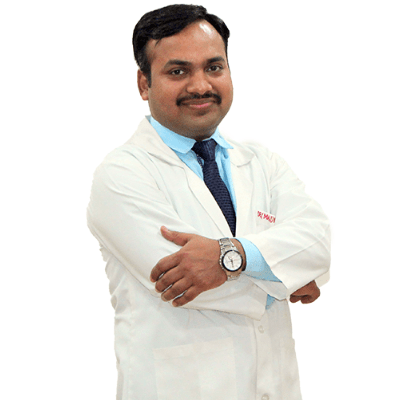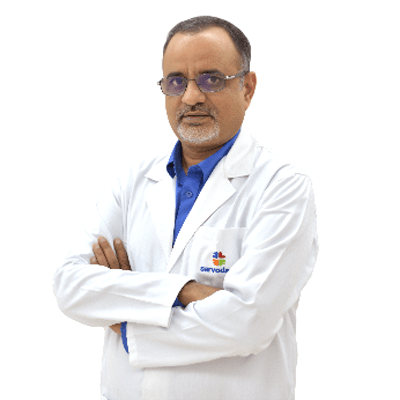
Coronary artery bypass graft surgery, also known as CABG or bypass surgery, can help to restore blood flow to an area of the heart. However, surgery does not stop the progression of atherosclerosis (coronary heart disease), which deposits fatty material into artery walls, narrowing them and eventually limiting blood flow at other sites in the bypassed arteries or in previously normal coronary arteries.
Patients and healthcare providers must work together after surgery to treat the underlying atherosclerosis and the factors that can cause progression of heart disease. (See ‘Reduce cardiac risk factors’ below.)
This topic review discusses treatments that are recommended after coronary artery bypass graft surgery. These treatments can help to:
- Reduce the risk of developing complications of coronary heart disease, including having a subsequent heart attack or dying.
- Help a person to feel better and have more energy.
Types of Coronary Artery Bypass Grafting
- Traditional Coronary Artery Bypass Grafting
This is the most common type of coronary artery bypass grafting (CABG). It’s used when at least one major artery needs to be bypassed.
During the surgery, the chest bone is opened to access the heart. Medicines are given to stop the heart, and a heart-lung bypass machine is used to keep blood and oxygen moving throughout the body during surgery. This allows the surgeon to operate on a still heart.
After surgery, blood flow to the heart is restored. Usually, the heart starts beating again on its own. In some cases, mild electric shocks are used to restart the heart.
- Off-Pump Coronary Artery Bypass Grafting
This type of CABG is similar to traditional CABG because the chest bone is opened to access the heart. However, the heart isn’t stopped, and a heart-lung bypass machine isn’t used. Off-pump CABG is sometimes called beating heart bypass grafting.
- Minimally Invasive Direct Coronary Artery Bypass Grafting
This surgery is similar to off-pump CABG. However, instead of a large incision (cut) to open the chest bone, several small incisions are made on the left side of the chest between the ribs.
This type of surgery mainly is used for bypassing the blood vessels in front of the heart. It’s a fairly new procedure that’s done less often than the other types of CABG.
This type of CABG isn’t for everybody, especially if more than one or two coronary arteries need to be bypassed.
What happens during coronary artery bypass surgery?
You will have general anesthesia for the surgery.
- The first step in the surgery is for the surgeon to prepare the arteries or remove the veins that will be used as bypass grafts.
- Next, the surgeon makes an incision down the center of your chest, through your sternum (breast bone), so your heart and coronary arteries can be seen. Your heart will likely be stopped for a short time so the surgeon can perform the bypass procedure on a “still” heart. During this time, the heart-lung bypass machine takes over for the heart and lungs, so blood keeps moving throughout the rest of the body. This is called “on-pump” surgery. The pump is turned off after the grafts are in place. Your heart beat and blood flow return to normal.
- The surgery can sometimes be done without using the heart-lung machine, while your heart is still beating. This is called “off-pump” or “beating heart” surgery.
- The bypass grafts are put in place by sewing one section of the artery or vein around a tiny opening just below the blockage in the diseased coronary artery and attaching the other end to a tiny opening made in the aorta. This redirects the blood flow around the blockage. If an internal thoracic (mammary) artery is used, one end is connected to the coronary artery while the other stays attached to the aorta.
- During the surgery, your surgeon will place temporary pacing wires and a chest tube before your sternum is closed with special wires. Your chest incision will be closed with internal stitches or traditional external stitches. The chest tube is needed to drain fluid. The pacing wires are placed in case you have an abnormal heart rhythm after surgery. This is common, and if it happens, the wires are attached to a temporary pacemaker until your heart rhythm returns to normal. The surgery generally lasts 3 to 5 hours, depending on the number of arteries that are being bypassed.
After Coronary Artery Bypass Surgery
You will start your recovery in an intensive care unit (ICU). You will stay in the ICU for 1-2 days so your healthcare team can closely keep track of your condition and vital signs. You will continue your recovery in a step-down unit. Most patients stay in the step-down unit for 3-5 days.
Risks/Benefits
Risks of coronary artery bypass surgery
As with any surgery, there are risks involved. Your surgical risks are related to your age, other medical conditions you have, and the number of procedures you have during a single operation. Your cardiologist will talk with you about these risks before surgery; please ask questions to make sure you understand why the procedure is recommended and what all of the potential risks are.
Recovery And Outlook
Activity during Recovery from Bypass Surgery
Your doctor will give you specific guidelines for your recovery and return to work, including information about activity and your general health. Most patients are able to drive in about 3 to 8 weeks after surgery.
It is very important to enroll in a Cardiac Rehabilitation program. You will begin working with a cardiac rehabilitation specialist while you are in the hospital, and you should continue your rehab after you go home. Cardiac rehab includes exercise, education about your risk factors and lifestyle, and peer support. The program will help you recover safely, enjoyably and provide long-term benefits, like reducing your risk of future heart problems.
Follow-Up Care
You will see your heart surgery team a few days after you leave the hospital. You will also need to visit your cardiologist or primary care doctor within the first month after surgery, and again 6-8 weeks after surgery. These follow-up appointments are very important. Your doctor will make sure you are taking the right types and amounts of medications and ensure that your recovery is on track.
Regular follow-up appointments with your cardiologist are important, even if you do not have symptoms. These appointments should be scheduled every year, or more often, as recommended by your doctor. You may also need regular testing, such as an echocardiogram.
Call your doctor if your symptoms become worse or happen more often. Do not wait until your next appointment to tell your doctor about changes in your symptoms.
How Important Are Lifestyle Changes?
Coronary artery bypass graft surgery increases the blood supply to your heart, but it does not cure coronary artery disease. It is critical that you take your medications exactly as prescribed and make changes in your lifestyle to reduce your risk of future heart problems. Lifestyle changes include:
- Quit smoking
- Manage high cholesterol
- Manage high blood pressure and diabetes
- Exercise regularly
- Reach and maintain a healthy weight
- Eat a heart-healthy diet
- Control stress and anger
- Take all medications as directed
- Take part in a cardiac rehabilitation program
- See your doctor for regular follow-up visits
Make an appointment
Our Doctors
-
Dr. Sujoy Kr. Bhattacharjee
Joint Replacement -
Dr. (Maj.) Mukesh Garg
Orthopaedics & Arthroscopy -
Dr. Kamal Verma
Neuro Sciences


